Mangal Pandey: 5 Explosive Moments That Sparked India’s First Revolt
🔥 Introduction: Mangal Pandey – The First Spark of India’s Freedom Flame
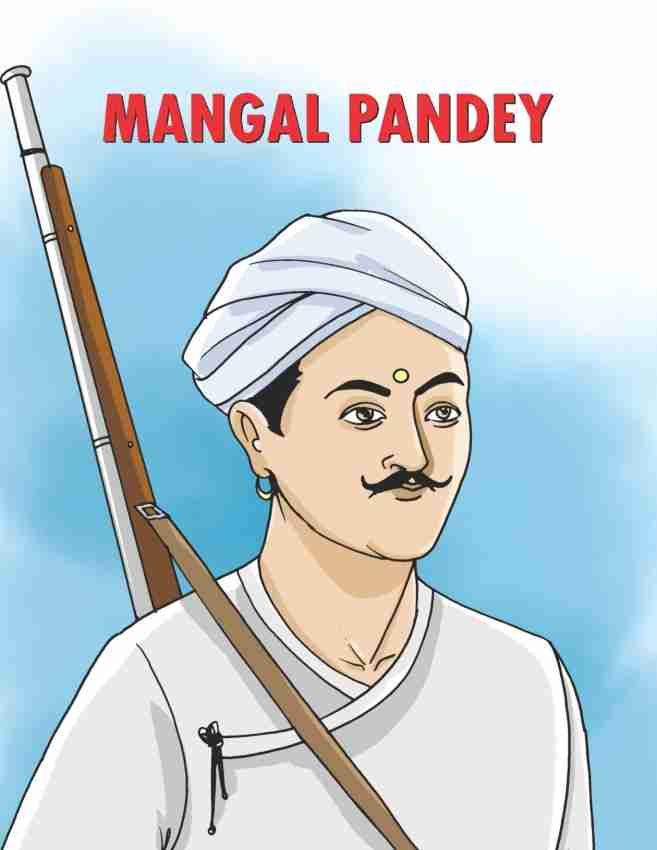
Mangal Pandey was not just a soldier—he was a symbol. A name that echoes through the corridors of India’s freedom struggle, reminding us that rebellion doesn’t always begin with grand speeches or mass movements. Sometimes, it begins with one man, one moment, and one act of defiance.
Born on 19 July 1827 in Nagwa village, near Faizabad in present-day Uttar Pradesh, Mangal Pandey grew up in a Brahmin household steeped in tradition and pride. But destiny had other plans. At the age of 22, he joined the 34th Bengal Native Infantry of the British East India Company. What started as a career in uniform would soon turn into a legacy of resistance.
In the mid-1850s, the British introduced the Enfield rifle, whose cartridges were rumored to be greased with cow and pig fat—an insult to both Hindu and Muslim soldiers. For Mangal Pandey, this wasn’t just a military issue. It was a direct attack on faith, identity, and dignity. And he refused to stay silent.
On 29 March 1857, at the military barracks in Barrackpore, Mangal Pandey took a stand that would change history. He attacked British officers, called fellow sepoys to rise, and fired the first shot of what would become the First War of Indian Independence. Though he was arrested and later executed on 8 April 1857, his courage ignited a rebellion that spread across the subcontinent.
Mangal Pandey didn’t live to see India free. But his name became a rallying cry for generations of revolutionaries—from Rani Lakshmibai to Bhagat Singh. His story was passed down in whispers, in textbooks, and eventually, in cinema. The 2005 film Mangal Pandey: The Rising brought his legacy to a new generation, reminding us that freedom is never free—it is earned in blood, sacrifice, and unshakable belief.
What makes Mangal Pandey’s story so powerful is its simplicity. He wasn’t a politician or a scholar. He was a sepoy—a common man with uncommon courage. His rebellion wasn’t planned in secret chambers. It was spontaneous, raw, and deeply personal. And that’s why it resonated.
Today, as we scroll through reels and read blogs, it’s easy to forget the roots of our freedom. But Mangal Pandey’s name pulls us back. It reminds us that resistance begins with awareness. That dignity matters. That one voice can shake an empire.
In 1984, the Government of India honored him with a commemorative postage stamp, officially recognizing him as one of the earliest freedom fighters. But his real tribute lives in the hearts of those who still believe in justice, unity, and fearless truth.
Mangal Pandey is not just a historical figure. He is a mindset. A reminder that courage doesn’t wait for permission. It acts. It speaks. It rises.
So when we say his name—Mangal Pandey—we’re not just remembering a man. We’re reigniting a flame.
Table of Contents
🔥 Birth of a Rebel: The Rise of Mangal Pandey
🔹 Step 1: A Seed Is Planted – 19 July 1827
In the quiet village of Nagwa, near Faizabad, a child was born who would one day shake an empire.
His name? Mangal Pandey.
Born into a Brahmin family, he was raised with discipline, tradition, and pride.
These weren’t just values—they were weapons.
Weapons that would later fuel his fire.
🔹 Step 2: Roots of Resistance
Mangal Pandey grew up watching injustice.
He saw British officers treat Indian soldiers like tools, not men.
He heard stories of lost kingdoms, broken promises, and stolen dignity.
And he listened.
Not with fear—but with fury.
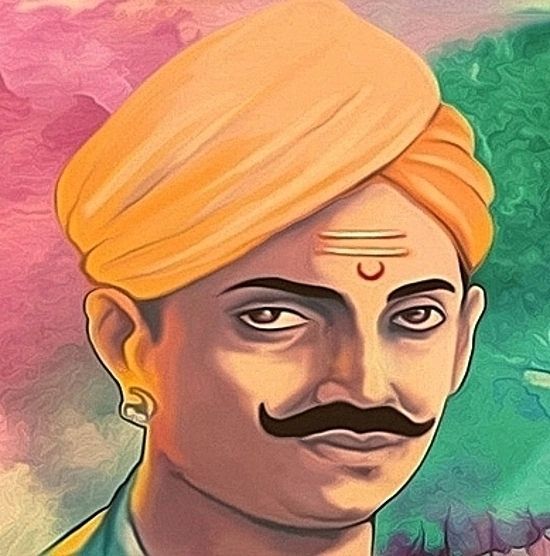
His upbringing wasn’t just religious—it was righteous.
He learned that honor mattered more than orders.
That silence was surrender.
And that one voice could roar louder than a thousand commands.
🔹 Step 3: The Soldier Within
At age 22, Mangal Pandey joined the 34th Bengal Native Infantry.
He wore the British uniform—but never their mindset.
He trained hard, fought well, and earned respect.
But inside, he was watching.
Waiting.
Burning.
He didn’t join to serve the crown.
He joined to understand it.
To challenge it.
To one day defy it.
🔹 Step 4: The Spark Before the Storm
In the mid-1850s, whispers spread.
The British introduced the Enfield rifle.
Its cartridges were rumored to be greased with cow and pig fat.
For Hindus and Muslims alike, this was sacrilege.
It wasn’t just a weapon—it was humiliation.
Mangal Pandey saw through it.
He knew this wasn’t ignorance—it was insult.
And he refused to bow.
🔹 Step 5: A Mindset of Fire
Mangal Pandey didn’t wait for permission.
He didn’t ask for allies.
He became the spark.
The one who dared to say “No.”
The one who turned quiet anger into loud action.
His early life wasn’t filled with speeches.
It was filled with silence.
But that silence was sharp.
It was watching, learning, preparing.
🔹 Step 6: Why This Chapter Matters
The birth of Mangal Pandey isn’t just a date—it’s a declaration.
It tells us that revolution doesn’t begin in battlefields.
It begins in childhood.
In values.
In moments when a boy sees injustice and decides he won’t accept it.
His story reminds us:
- That courage is cultivated
- That pride can be powerful
- That rebellion starts with belief
Mangal Pandey didn’t become a hero overnight.
He became one through years of quiet resistance.
Through every insult he swallowed.
Through every truth he refused to ignore.
🔥 Blog Section: The Early Education of Mangal Pandey – A Mindset Forged Without a Classroom
🔹1: Born to Learn – 19 July 1827
In the dusty lanes of Nagwa village, a boy named Mangal Pandey was born.
No school bells. No blackboards.
Just the rhythm of tradition, the discipline of faith, and the fire of pride.
His classroom? His home. His temple. His land.
🔹2: Learning Without Walls
Mangal Pandey didn’t attend a British school.
He wasn’t taught by colonial teachers.
He learned from elders, scriptures, and stories.
From chants that echoed in temples.
From tales of Ram, Shivaji, and valor.
His education wasn’t formal—but it was fierce.
🔹3: The Brahmin Code
As a Brahmin child, Pandey was raised with moral clarity and spiritual depth.
He learned dharma before doctrine.
Respect before rules.
And resistance before retreat.
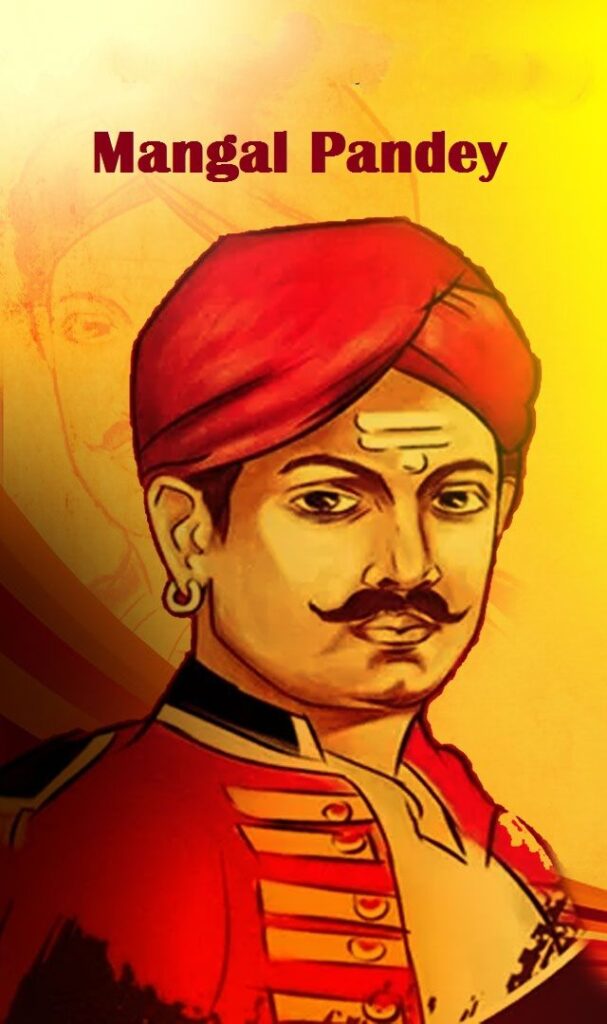
His lessons weren’t written—they were lived.
He saw injustice. He felt it.
And he remembered.
🔹4: The British Curriculum vs Bharat’s Soul
While British schools taught loyalty to the crown,
Mangal Pandey’s world taught loyalty to conscience.
He didn’t memorize colonial maps—he traced the pain of his people.
He didn’t recite British victories—he whispered Indian wounds.
This wasn’t ignorance.
It was intentional resistance.
🔹5: Education That Ignites
Mangal Pandey’s real education began when he joined the 34th Bengal Native Infantry.
There, he saw the truth behind British discipline.
He saw how they trained obedience, not honor.
And he chose to rebel.
His schooling wasn’t in books—it was in battle.
His degree? Defiance.
🔹6: Why This Matters
We often ask: where did Mangal Pandey study?
The better question is: what did he learn—and why did it matter?
He learned that silence is surrender.
That faith is strength.
That one man can spark a revolution.
His story proves:
- You don’t need a classroom to become a leader
- You don’t need a certificate to change history
- You just need courage—and clarity
🔥 The First Spark: Mangal Pandey’s Rebellion That Lit the Flame of 1857
Some heroes speak through words.
Others speak through action.
And a few—like Mangal Pandey—speak through sacrifice.
On 29 March 1857, a lone sepoy stood against the British Empire.
He didn’t have a crowd.
He didn’t have a speech.
But he had fire.
And that fire became the first spark of India’s First War of Independence.
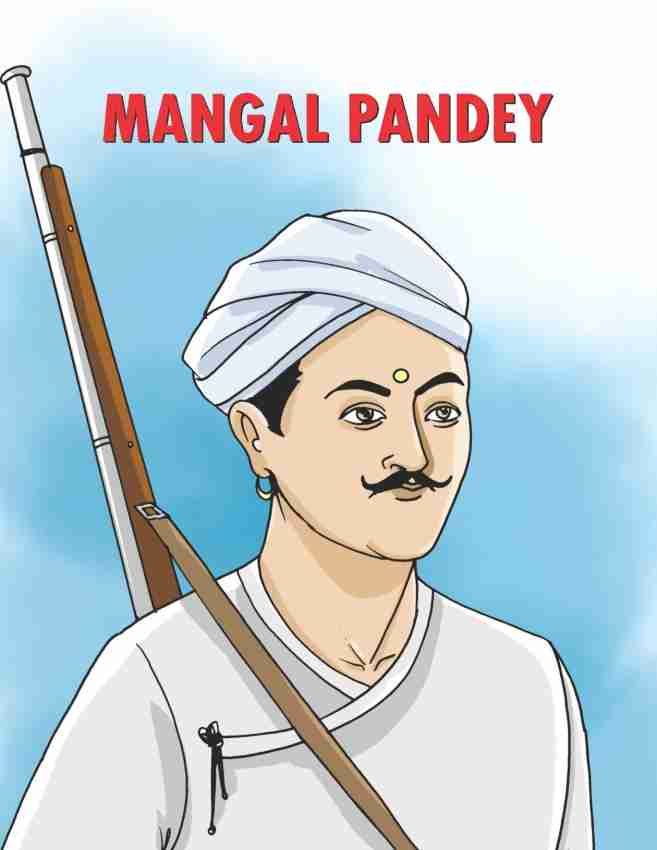
This chapter isn’t just about rebellion.
It’s about identity, defiance, and the kind of courage that doesn’t wait—it acts.
🩸1: The Uniform That Couldn’t Silence Him
In 1849, at age 22, Mangal Pandey joined the 34th Bengal Native Infantry.
He wore the British uniform.
He trained under British command.
But he never surrendered his soul.
He was sharp, strong, and proud.
He followed orders—but never blindly.
He watched. He listened. He questioned.
His loyalty wasn’t to the crown.
It was to conscience.
🔥2: The Cartridge That Crossed the Line
In early 1857, the British introduced the Enfield rifle.
Its cartridges were rumored to be greased with cow and pig fat.
For Hindus and Muslims alike, this was sacrilege.
Mangal Pandey saw it for what it was:
A calculated insult.
A direct attack on faith.
A test of submission.
He didn’t flinch.
He didn’t compromise.
He chose resistance.
🗣️3: The Act That Shook Barrackpore
On 29 March 1857, at the Barrackpore military barracks, Mangal Pandey made his move.
He loaded his musket—not with fear, but with fury.
He attacked British officers, including Lieutenant Baugh, and called fellow sepoys to rise.
He stood alone.
But his defiance echoed like thunder.
He was arrested.
But the rebellion had begun.
🕊️ 4: The Trial That Couldn’t Break Him
After his arrest, Mangal Pandey was court-martialed.
He didn’t plead.
He didn’t beg.
He stood tall.
His silence spoke louder than any defense.
He knew what he had done.
And he knew why.
On 8 April 1857, he was hanged at Barrackpore.
But his death wasn’t the end.
It was ignition.
🔥5: The Fire That Spread Across India
Just weeks after Pandey’s execution, the 1857 Revolt erupted.
From Meerut to Delhi, Kanpur to Jhansi—India rose.
His name became a rallying cry.
His courage became a blueprint.
His sacrifice became a symbol.
Mangal Pandey didn’t lead an army.
He led a mindset.
🧭6: A Legacy That Refused to Fade
Even after his death, Mangal Pandey’s story lived on.
He was honored in textbooks, memorials, and films.
In 1984, India issued a commemorative postage stamp in his name.
In 2005, Mangal Pandey: The Rising brought his story to the big screen.
But his real legacy lives in every Indian who dares to stand tall.
Who refuses to bow.
Who chooses dignity over fear.
🌟 Why This Chapter Matters
The rebellion of Mangal Pandey wasn’t just a military act.
It was a moral awakening.
It showed that one man can challenge an empire.
That faith is worth defending.
And that courage doesn’t need permission.
His final stand wasn’t just defiance.
It was direction.
It told India:
“Don’t wait for orders. Rise for honor.”
And India did.
🔥 1856: The Cartridge That Lit Mangal Pandey’s Fire
Some revolutions begin with speeches.
Others begin with silence.
But the one led by Mangal Pandey began with a cartridge.
In 1856, the British introduced the Enfield rifle to Indian sepoys.
It wasn’t just a new weapon.
It was a test.
A trigger.
A spark.
🔹1: The Rifle That Crossed a Line
The Enfield rifle came with a twist.
Its cartridges had to be bitten open before loading.
And they were rumored to be greased with cow and pig fat.
For Hindus, the cow is sacred.
For Muslims, the pig is forbidden.
This wasn’t just offensive.
It was explosive.
Mangal Pandey saw it clearly.
This wasn’t a mistake.
It was a message.
🔹2: Faith vs Firepower
The British called it “military efficiency.”
But for Indian soldiers, it was religious humiliation.
They were asked to choose:
Obey orders—or betray their beliefs.
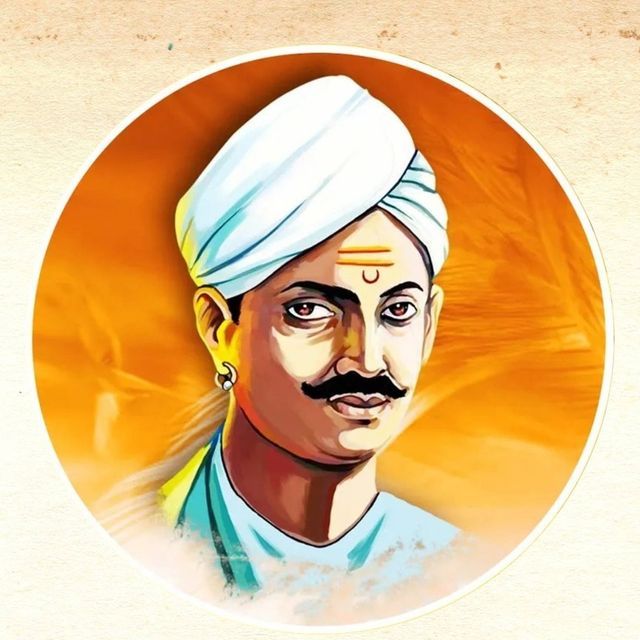
Mangal Pandey refused to choose.
He chose resistance.
He knew this wasn’t just about a rifle.
It was about identity.
It was about dignity.
It was about drawing a line—and refusing to cross it.
🔹3: The Barracks Begin to Boil
Whispers spread across regiments.
Sepoys began to question.
Tensions rose.
Trust broke.
In the barracks of Barrackpore, the air grew heavy.
And in the heart of Mangal Pandey, something ignited.
He didn’t shout.
He didn’t protest.
He prepared.
🔹4: The Man Behind the Fury
Mangal Pandey wasn’t just a soldier.
He was a thinker.
A believer.
A man of principle.
He saw how the British played divide and rule.
He saw how they mocked faith to test loyalty.
And he decided:
Enough.
His silence turned into resolve.
His resolve turned into rebellion.
🔹5: Why This Moment Mattered
The cartridge controversy wasn’t just a military blunder.
It was a cultural insult.
A spiritual violation.
A spark that lit the fire of 1857.
Mangal Pandey didn’t wait for permission.
He didn’t wait for a crowd.
He stood up—alone, fierce, and fearless.
His defiance became the first act of India’s First War of Independence.
🔹6: Lessons from the Cartridge Crisis
This chapter teaches us:
- That faith is not weakness—it’s strength
- That dignity matters more than duty
- That one man’s stand can awaken a nation
Mangal Pandey didn’t just react.
He responded.
He didn’t just resist.
He redefined rebellion.
🔥 29 March 1857: Mangal Pandey’s First Shot of Freedom
Some revolutions are planned.
Others erupt.
But the one that began with Mangal Pandey was pure fire—raw, fearless, and unforgettable.
On 29 March 1857, at the Barrackpore military barracks, a single act of defiance shattered the silence of colonial submission.
It wasn’t just a rebellion.
It was a message.
A warning.
A beginning.
🔹1: The Day the Barracks Held Its Breath
The sun rose like any other.
But something was different.
The air was tense.
The whispers louder.
The anger—boiling.
Mangal Pandey, a sepoy in the 34th Bengal Native Infantry, had reached his limit.
The insult of the Enfield rifle cartridges, greased with cow and pig fat, had crossed a sacred line.
Faith had been mocked.
Dignity had been challenged.
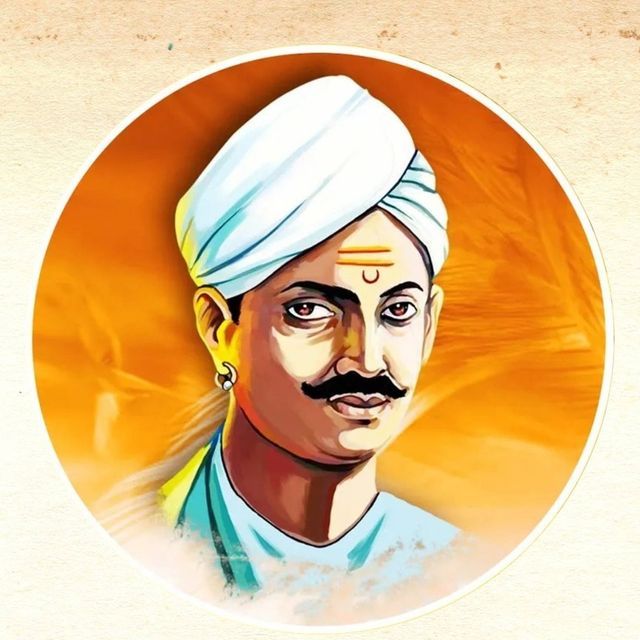
And he would not stay silent.
🔹2: The First Blow
That afternoon, Lieutenant Baugh, a British officer, rode into the parade ground.
He had heard that a sepoy was causing unrest.
What he didn’t expect—was resistance.
Mangal Pandey stood tall, musket in hand.
No fear.
No hesitation.
He fired.
The shot missed.
But the message landed.
This wasn’t about aim.
It was about awakening.
🔹3: The Call to Rise
Pandey didn’t act alone in spirit—he called out to his fellow sepoys.
“Refuse the cartridge. Refuse the chains.”
He urged them to rise.
To remember who they were.
To fight not just for themselves—but for Bharat.
Some froze.
Some fled.
But the seed was planted.
Mangal Pandey had broken the silence.
And silence, once broken, cannot be repaired.
🔹4: The Arrest That Couldn’t Stop the Fire
British reinforcements arrived.
Pandey fought fiercely.
But he was outnumbered.
Overpowered.
Arrested.
They thought they had stopped him.
But they hadn’t understood him.
Because Mangal Pandey wasn’t just a man.
He was a mindset.
And mindsets don’t die in chains.
🔹5: The Spark That Lit a Nation
News of the rebellion spread.
From Barrackpore to Meerut.
From Delhi to Jhansi.
India stirred.
The 1857 Revolt—India’s First War of Independence—was born.
And its first cry came from Mangal Pandey.
He didn’t wait for a leader.
He became one.
He didn’t follow orders.
He followed his conscience.
🔹6: Why This Moment Matters
29 March 1857 wasn’t just a date.
It was a declaration.
It told every Indian:
- That one man can challenge an empire
- That courage doesn’t need permission
- That freedom begins with refusal
Mangal Pandey didn’t plan a revolution.
He provoked one.
With one act.
One shot.
One stand.
🔥 30 March 1857: Mangal Pandey’s Arrest That Echoed Across India
Some revolutions begin with a roar.
Others begin with a whisper.
But the one sparked by Mangal Pandey began with a gunshot—and refused to be silenced.
On 30 March 1857, the British arrested a man they thought was just a soldier.
But what they captured was a symbol.
A spark.
A storm waiting to rise.
🔹1: The Aftershock of Rebellion
The day before, Mangal Pandey had stood alone at Barrackpore, musket in hand.
He fired at British officers.
He called fellow sepoys to rise.
He defied the empire.
Now, the barracks were tense.
The British were shaken.
And India was watching.
🔹2: The Arrest That Couldn’t Cage Courage
British forces moved quickly.
They surrounded Pandey.
He fought fiercely—but was outnumbered.
He was captured.
Disarmed.
Imprisoned.
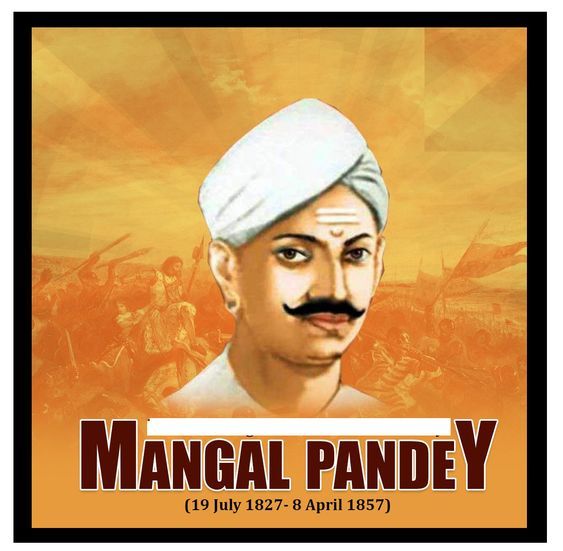
But even in chains, Mangal Pandey stood tall.
He didn’t plead.
He didn’t flinch.
He didn’t apologize.
Because rebels don’t retreat.
They rise—even behind bars.
🔹3: The Barrackpore Barracks Go Silent
After the arrest, silence spread.
But it wasn’t peace.
It was pressure.
Indian sepoys whispered.
They remembered his words.
His fire.
His refusal.
Mangal Pandey’s act had cracked the wall of fear.
And once cracked, it couldn’t be rebuilt.
🔹4: The British Panic Begins
The British thought they had control.
But Pandey’s rebellion exposed their weakness.
One man had shaken their authority.
One shot had pierced their pride.
They feared more uprisings.
More defiance.
More Pandeys.
And they were right.
🔹5: The Message Behind the Chains
Mangal Pandey didn’t speak much after his arrest.
But his silence was loud.
It said:
“I did what was right.”
“I stood for my people.”
“I’m not afraid.”
His imprisonment wasn’t defeat.
It was declaration.
A message to every Indian soldier:
You are not powerless.
You are not alone.
You are not forgotten.
🔹6: Why This Moment Matters
30 March 1857 wasn’t just about an arrest.
It was about awakening.
It showed that:
- One man’s courage can shake an empire
- Chains can’t silence truth
- Rebellion begins with belief
Mangal Pandey didn’t need an army.
He became one.
His capture didn’t end the fight.
It fueled it.
⚖️ 6 April 1857: Mangal Pandey’s Trial That Defied Fear
Some men break under pressure.
Others rise.
Mangal Pandey didn’t just rise—he stood unshaken in the face of death.
On 6 April 1857, the British put him on trial.
They wanted to make an example.
But Pandey became a legend.
🔹1: The Courtroom of Control
The British military court at Barrackpore was tense.
Officers sat in judgment.
The accused stood alone.
No lawyer. No defense. No plea.
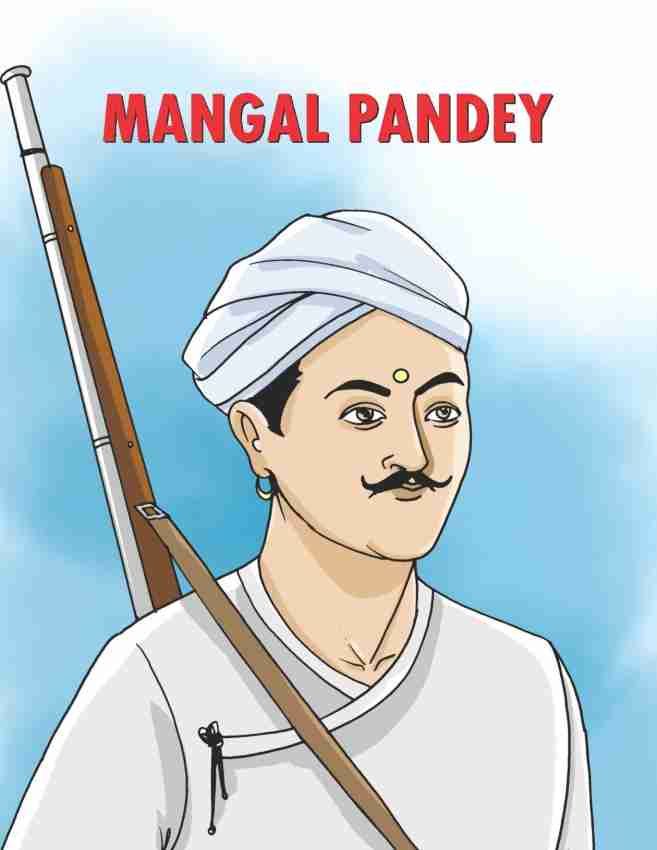
Mangal Pandey had attacked British officers.
He had called for rebellion.
Now, they wanted him silenced.
But he refused to bend.
🔹2: Calm in Chains
Pandey stood in uniform—chained, but proud.
He didn’t tremble.
He didn’t beg.
He didn’t ask for mercy.
His silence was powerful.
It said:
“I did what I believed.”
“I regret nothing.”
“I fear no verdict.”
The British expected fear.
They got fire.
🔹3: The Sentence That Sparked Fury
The court declared him guilty.
The punishment: death by hanging.
Date set.
Decision final.
But the moment wasn’t theirs.
It was his.
Mangal Pandey didn’t flinch.
He didn’t cry.
He didn’t plead.
He accepted the sentence like a warrior.
Because rebels don’t die—they rise.
🔹4: The Message Behind the Silence
Pandey’s trial wasn’t just legal—it was symbolic.
It showed the British grip.
But it also showed Indian grit.
His refusal to plead was a message:
- That dignity matters more than survival
- That silence can roar louder than speeches
- That one man’s courage can shake an empire
Mangal Pandey didn’t fight for escape.
He fought for awakening.
🔹5: The Barracks Begin to Stir
News of the trial spread.
Sepoys whispered.
Civilians mourned.
The British felt uneasy.
They had sentenced a man.
But they had awakened a movement.
Mangal Pandey’s calm defiance became a rallying cry.
His silence became a signal.
His sentence became a spark.
🔹6: Why This Moment Matters
6 April 1857 wasn’t just a trial.
It was a test of spirit.
It proved:
- That courage doesn’t need a crowd
- That truth doesn’t fear judgment
- That rebellion begins with resolve
Mangal Pandey didn’t just face death.
He faced it with pride.
And that pride became India’s first roar for freedom.
🕯️ 8 April 1857: Mangal Pandey’s Execution That Lit a Nation’s Fire
Some men die in silence.
Others die in defiance.
Mangal Pandey died standing—unshaken, unafraid, unforgettable.
On 8 April 1857, the British hanged him publicly at Barrackpore.
They thought they were ending a rebellion.
But they were starting a revolution.
🔹1: The Final Walk
The gallows stood tall.
The crowd gathered—sepoys, officers, civilians.
Tension filled the air.
Mangal Pandey walked calmly.
No chains could bend his spine.
No verdict could crush his pride.

He didn’t plead.
He didn’t flinch.
He didn’t look back.
Because rebels don’t retreat.
They rise—even in death.
🔹2: The Execution That Echoed
The rope tightened.
The silence broke.
And India stirred.
Mangal Pandey was hanged—alone, but not forgotten.
His body fell.
But his legacy rose.
The British wanted fear.
They got fury.
🔹3: The Crowd That Remembered
Those who watched didn’t forget.
His fellow sepoys saw courage.
His people saw sacrifice.
His enemies saw resistance.
The message was clear:
Mangal Pandey had become more than a soldier.
He was now a symbol.
A spark.
A storm.
🔹4: The Empire Miscalculates
Weeks later, the 1857 Revolt erupted.
From Meerut to Delhi, Kanpur to Jhansi—India rose.
The British had silenced one man.
But they had awakened millions.
Mangal Pandey’s death became a rallying cry.
His name became a weapon.
His sacrifice became a seed.
🔹5: The Martyr Who Refused to Fade
He didn’t leave behind speeches.
He left behind strength.
His final act taught India:
- That dignity matters more than life
- That courage doesn’t need a crowd
- That one man can ignite a movement
Mangal Pandey didn’t just die.
He transformed.
From sepoy to symbol.
From rebel to legend.
🔹6: Why This Moment Matters
8 April 1857 wasn’t just an execution.
It was a declaration.
It told India:
- That freedom demands sacrifice
- That silence can be shattered
- That rebellion begins with belief
Mangal Pandey didn’t wait for history.
He made it.
His death wasn’t the end.
It was the beginning.
🔥 Post-1857: Mangal Pandey’s Legacy That Refused to Die
Some names fade after death.
Mangal Pandey didn’t.
He became a roar that echoed across generations.
His rebellion in 1857 wasn’t just a moment—it was a movement.
And after his execution, that movement grew louder.
🔹1: The Spark That Lit a Century
Mangal Pandey fired the first shot.
But it wasn’t just a bullet—it was a signal.
A call to rise.
A call to remember.
His courage became the foundation of India’s freedom struggle.
Every rebel who followed carried a piece of his fire.
🔹2: Rani Lakshmibai and the Flame of Valor
Just months after Pandey’s death, Rani Lakshmibai led her own revolt.
She fought with swords, strategy, and spirit.
But her fire?
It was lit by Pandey’s defiance.
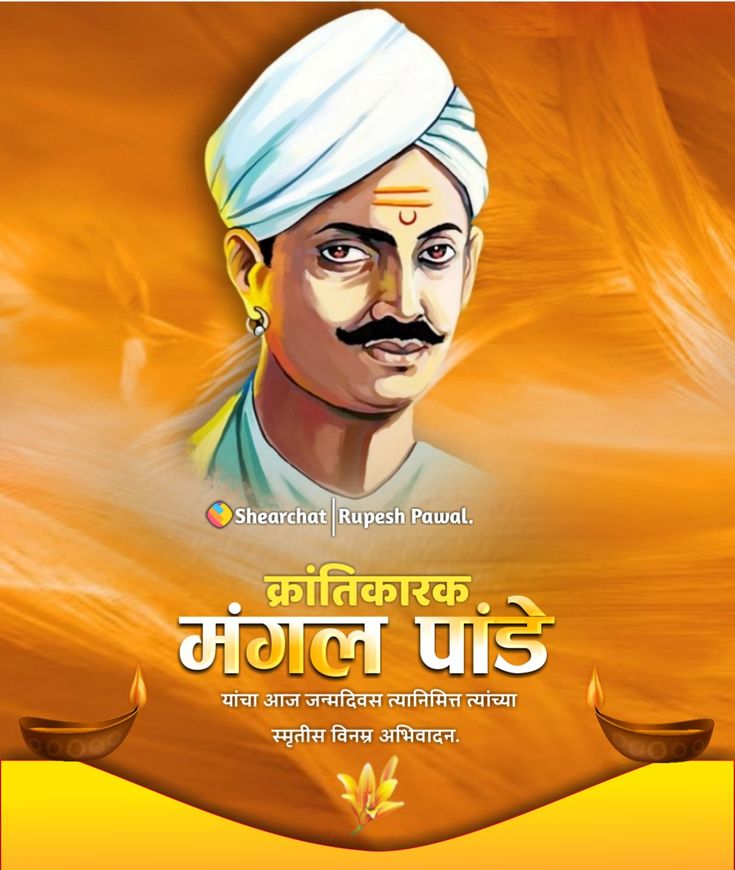
She didn’t just fight the British.
She fought with the memory of a man who dared first.
🔹3: Bhagat Singh and the Echo of Resistance
Decades later, Bhagat Singh stood in court, fearless and proud.
He didn’t plead.
He didn’t flinch.
Just like Mangal Pandey.
Singh’s revolution wasn’t born in isolation.
It was born from legacy.
From Pandey’s refusal to bow.
🔹4: A Name That Became a Symbol
Schools were named after him.
Streets carried his name.
Statues rose in his honor.
In 1984, India issued a commemorative stamp for Mangal Pandey.
In 2005, a film brought his story to the big screen.
But his real tribute?
It lives in every Indian who stands for truth.
🔹5: Why This Legacy Matters
Mangal Pandey didn’t just fight.
He inspired.
His story teaches us:
- That courage can be contagious
- That one act can awaken a nation
- That legacy isn’t built in years—it’s built in moments
He didn’t live to see India free.
But freedom walked the path he cleared.
🏵️ 1984: Mangal Pandey Officially Honored by India
Some heroes are remembered in silence.
Others are remembered in stone.
But Mangal Pandey was remembered in ink—on a stamp that carried his legacy across the nation.
In 1984, the Government of India issued a commemorative postage stamp in honor of Mangal Pandey.
It wasn’t just a tribute.
It was a declaration.
India was finally saying:
“We remember. We respect. We rise.”
🔹1: A Nation Looks Back
More than a century had passed since Mangal Pandey fired the first shot of rebellion in 1857.
His courage had sparked a movement.
His sacrifice had inspired generations.
But official recognition had taken time.
In 1984, India corrected that silence.
The stamp wasn’t just paper—it was pride.
🔹2: The Stamp That Spoke Volumes
The commemorative stamp featured Mangal Pandey in uniform, musket in hand, eyes full of fire.
It traveled across cities, villages, and borders.
It told his story without words.
It reminded every Indian:
Freedom began with one man’s refusal to bow.
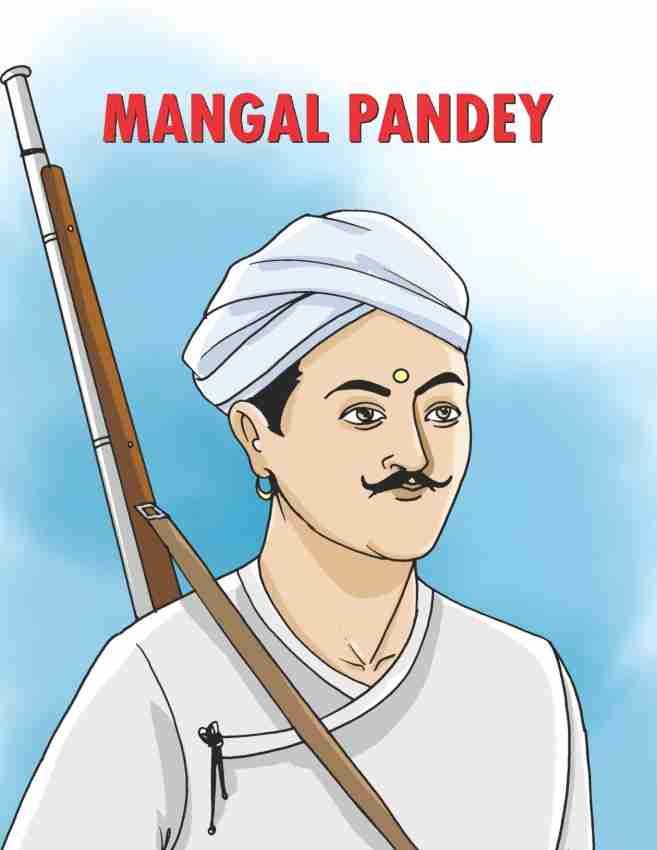
🔹3: Why This Honor Mattered
This wasn’t just about history.
It was about identity.
By honoring Mangal Pandey, India honored:
- The spirit of resistance
- The courage to stand alone
- The legacy of rebellion
It told the world:
Our freedom wasn’t gifted.
It was earned—in blood, belief, and bravery.
🔹4: Legacy in Every Letter
Every time someone used that stamp, they carried a piece of Pandey’s fire.
Letters became messengers of memory.
Postcards became carriers of courage.
Mangal Pandey wasn’t just in textbooks anymore.
He was in homes.
In hands.
In hearts.
🔹5: Why This Moment Still Matters
1984 wasn’t just a year.
It was a reminder.
It showed that:
- Legacy never fades
- Courage never dies
- Recognition may be delayed—but never denied
Mangal Pandey had become more than a rebel.
He was now a national icon.
🎬 2005: Mangal Pandey – The Rising of a Forgotten Flame
Some stories fade in textbooks.
Others rise on screen.
In 2005, Bollywood gave Mangal Pandey a voice, a face, and a roar.
The film “Mangal Pandey – The Rising”, starring Aamir Khan, wasn’t just cinema.
It was resurrection.
🔹1: History Meets Emotion
The film blended fact with feeling.
It showed Pandey’s fire.
His rebellion.
His silence.
His sacrifice.
Audiences didn’t just watch—they felt.
They saw a man who dared to defy.
Who chose honor over orders.
🔹2: A New Generation Awakens
For many, Mangal Pandey was just a name in a chapter.
But the film changed that.
It made him real.
Relatable.
Revolutionary.
Youth connected.
Schools discussed.
Families remembered.
🔹3: Legacy in Lights
The movie reignited national pride.
It reminded India that freedom began with fire.
And that fire had a name: Mangal Pandey.
His courage wasn’t just historical.
It was cinematic.
It was cultural.
It was timeless.
🔚 Conclusion: Mangal Pandey – The First Flame of Freedom
Mangal Pandey wasn’t just a soldier—he was India’s first spark of rebellion.
His defiance on 29 March 1857 at Barrackpore wasn’t a moment of rage—it was a moment of awakening.
He stood alone, fired the first shot, and refused to bow.
His courage lit the fuse for the First War of Indian Independence, inspiring legends like Rani Lakshmibai and Bhagat Singh.
Even in chains, Mangal Pandey remained unshaken.
His trial, execution, and legacy became symbols of resistance.
India didn’t forget.
In 1984, the government honored him with a commemorative stamp.
In 2005, his story reached millions through cinema.
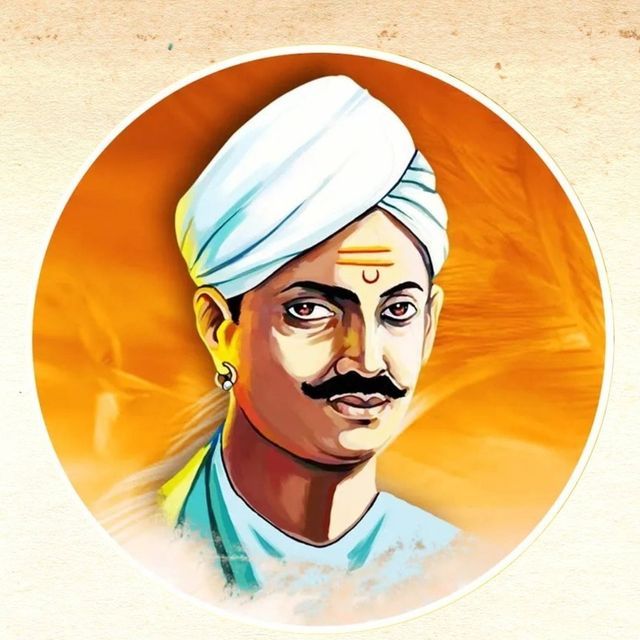
Today, Mangal Pandey lives on—not just in history books, but in every Indian heart that beats for freedom.
His name is more than a keyword.
It’s a mindset.
A movement.
A mirror for every generation that dares to rise.
Let his story remind us:
Revolution doesn’t wait.
It begins with one voice, one act, one fire.
Mangal Pandey was that fire.
And that fire still burns.
Internal Links:1.https://historyverse7.com/shivaji-maharaj/ 2.https://historyverse7.com/ashfaqulla-khan/
External Links:https://www.britannica.com/biography/Mangal-Pandey 2.https://en.wikipedia.org/wiki/Mangal_Pandey
📘 FAQ: Understanding Mangal Pandey
1.What did Mangal Pandey teach us about rebellion without a crowd?
Answer:
Mangal Pandey proved that rebellion doesn’t need a crowd—it needs conviction. He stood alone at Barrackpore, fired the first shot, and sparked a revolution. His courage showed that one voice, backed by belief, can shake an empire.
2.Was Mangal Pandey’s silence after arrest louder than his gunshot?
Answer:
Yes. His silence in court, his refusal to plead, and his calm before execution spoke volumes. It wasn’t weakness—it was strength. That silence became a roar in the hearts of future revolutionaries.
3.Did Mangal Pandey know he would become a symbol?
Answer:
No. He didn’t act for fame—he acted for faith and freedom. But history turned his defiance into legacy. His name became a rallying cry not because he planned it, but because he earned it.
4.What made Mangal Pandey’s rebellion spiritual as well as political?
Answer:
The cartridge controversy wasn’t just political—it was personal. It insulted his religion, his identity, his dignity. His rebellion was a defense of soul, not just soil. That’s why it burned so deep.
5.How would Mangal Pandey inspire today’s youth?
Answer:
He’d remind them: don’t wait for permission to stand for truth. Don’t fear being alone. Don’t trade values for comfort. Mangal Pandey’s fire wasn’t just for 1857—it’s fuel for every generation that dares to rise.
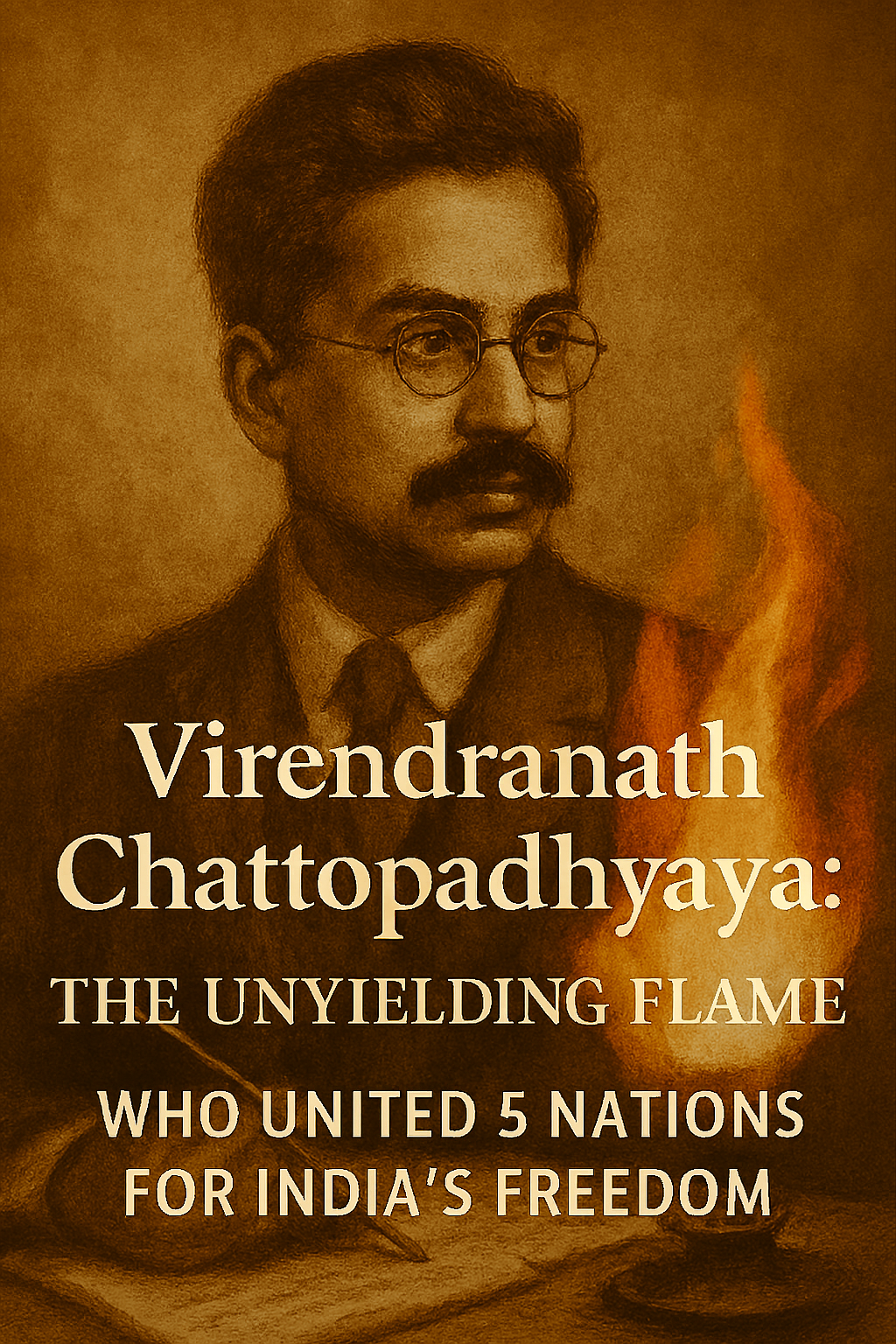
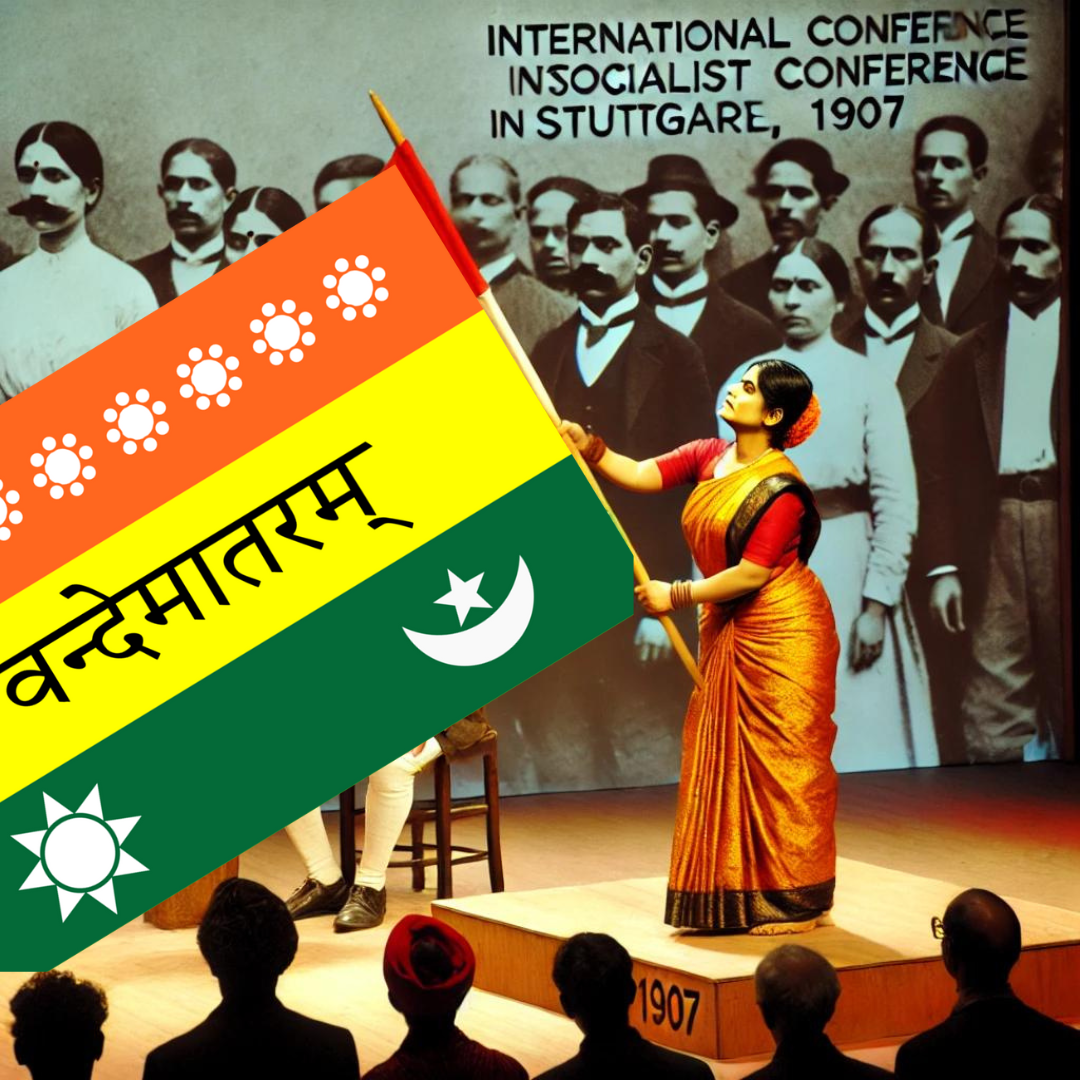
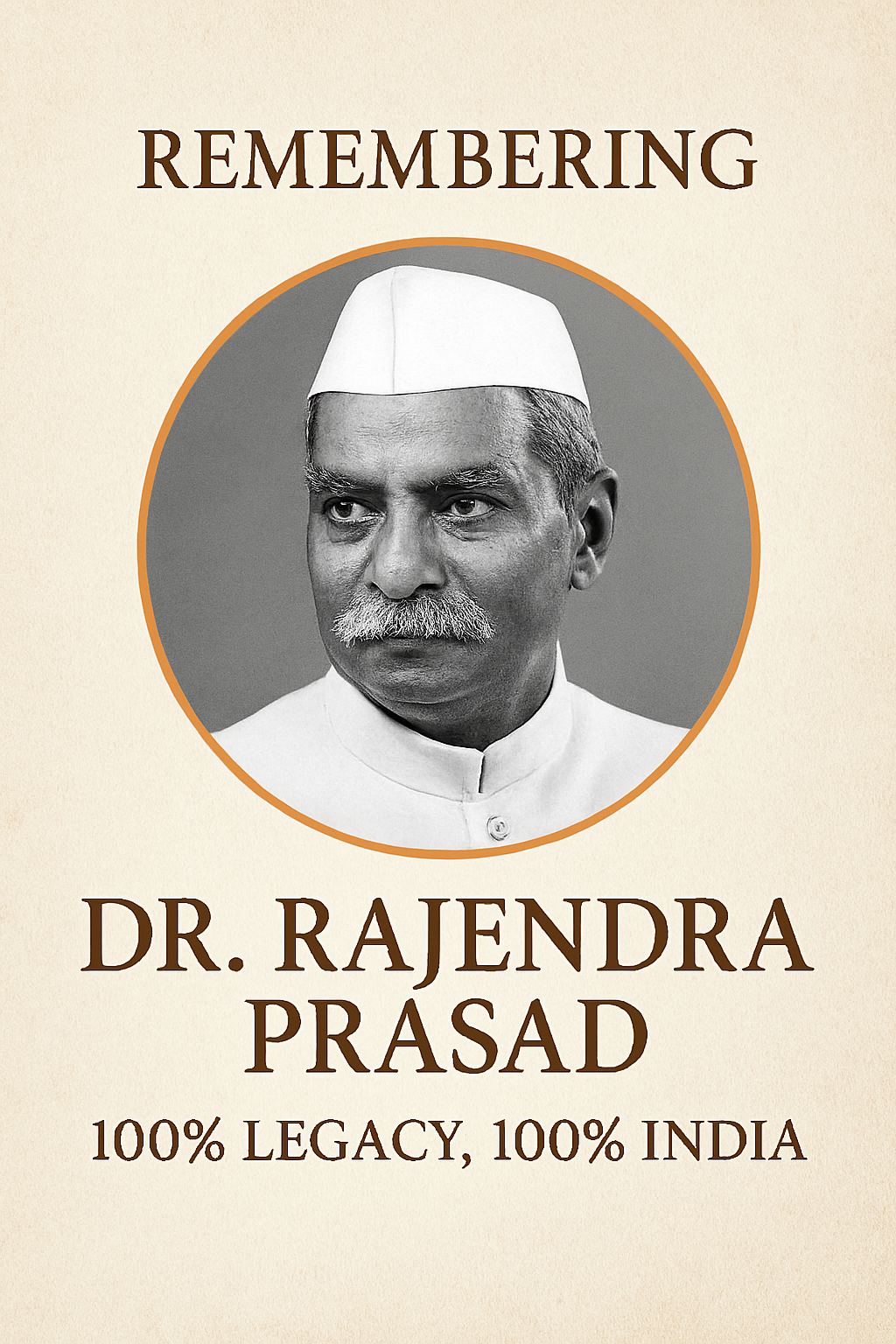
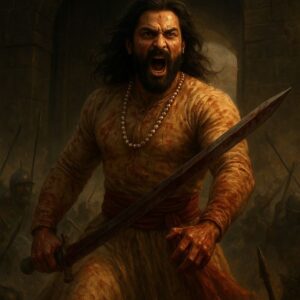
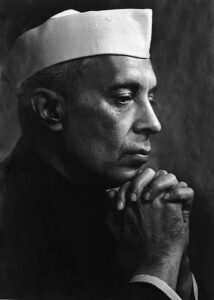
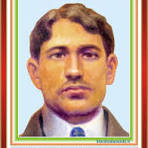
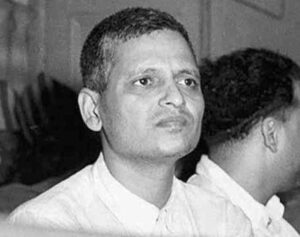
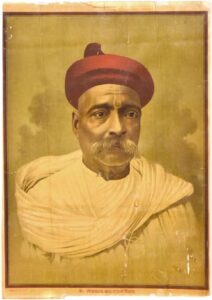
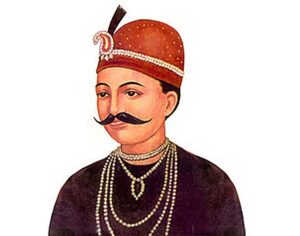
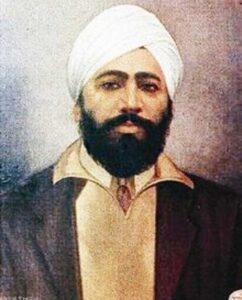
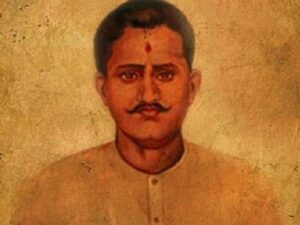
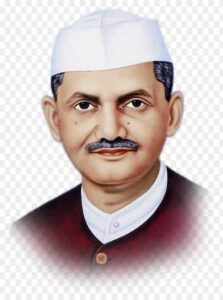
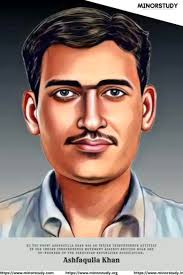
1 comment